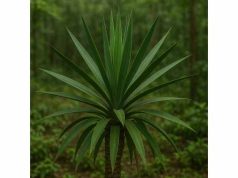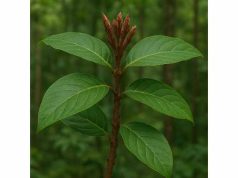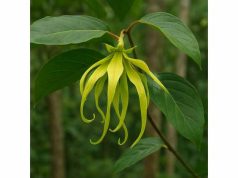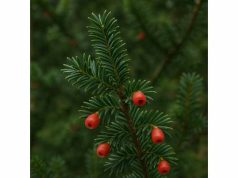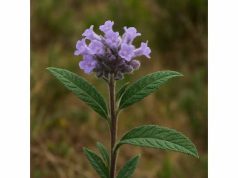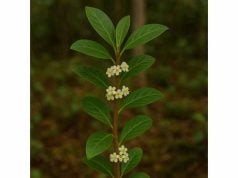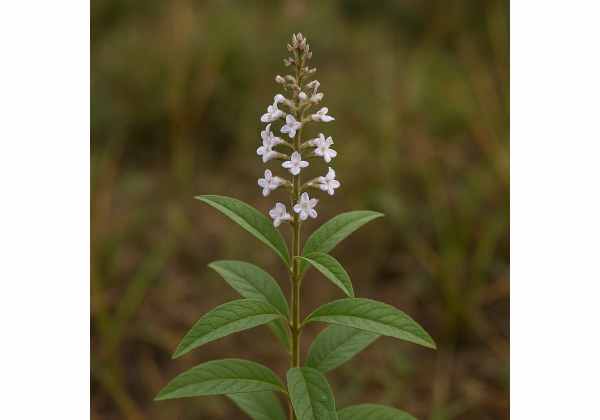
Yerba Luisa (Aloysia citrodora), also known as lemon verbena, enchants with its uplifting citrus aroma and a potent blend of bioactives that support relaxation, digestion, and immune health. Its leaves are rich in essential oils—primarily citral and limonene—alongside flavonoids, phenolic acids, and tannins that deliver antioxidant, anti-inflammatory, antispasmodic, and antimicrobial effects. Traditionally steeped as a soothing tea to calm nerves, ease indigestion, and relieve headaches, Yerba Luisa is also distilled into aromatic oils and crafted into topical infusions for skin and hair care. In this comprehensive guide, we’ll explore its botanical profile, dissect its phytochemistry, outline its core wellness advantages, detail practical applications with safety notes, and review pivotal research—bridging centuries of herbal wisdom with modern science.
Table of Contents
- Botanical Overview and Habitat
- Phytochemical Profile and Key Constituents
- Therapeutic Benefits and Essential Properties
- Applications and Safety Precautions
- Research Insights and Major Studies
- FAQ
Botanical Overview and Habitat
Aloysia citrodora, commonly called lemon verbena or Yerba Luisa, belongs to the Verbenaceae family. A tender perennial shrub, it reaches 1.5–2 meters tall under ideal conditions. Its cane-like stems bear narrow, lanceolate leaves 3–7 cm long, which emit a bright lemon scent when crushed. In late spring through summer, small white to pale lilac tubular flowers bloom in loose panicles, attracting bees and butterflies.
Native to western South America—particularly Argentina and Chile—Yerba Luisa has naturalized in Mediterranean and temperate regions worldwide. It thrives in full sun, well-drained fertile soils, and mild winters (USDA zones 8–11). In cooler climates, it is grown as an annual or container plant moved indoors during frost. Its vigorous growth habit and fragrant foliage make it a favorite in herb gardens, borders, and patio pots.
Phytochemical Profile and Key Constituents
Yerba Luisa’s healing virtues derive from a complex phytochemical matrix:
- Citral (Neral & Geranial)
- Profile & Actions: Comprising up to 60–75% of leaf essential oil. Exhibits strong antimicrobial, anti-inflammatory, and spasmolytic effects.
- Limonene
- Profile & Actions: Monoterpene (5–15%) supporting antioxidant defense, mood uplift, and digestive stimulation.
- Flavonoids (Luteolin, Apigenin, Verbascoside)
- Profile & Actions: Polyphenolic compounds that scavenge free radicals, modulate inflammation, and support vascular health.
- Phenolic Acids (Rosmarinic & Caffeic Acid)
- Profile & Actions: Contribute antioxidant and mild antimicrobial effects, supporting immune resilience.
- Tannins
- Profile & Actions: Provide astringent and anti-diarrheal actions, tightening mucosal tissues.
- Iridoids (Verbenalin)
- Profile & Actions: Display mild sedative and antispasmodic effects, synergizing with citral’s calming properties.
- Trace Minerals (Magnesium, Potassium, Calcium)
- Profile & Actions: Support muscle relaxation, nerve transmission, and electrolyte balance when taken as tea.
Therapeutic Benefits and Essential Properties
Yerba Luisa Benefits extend across multiple systems:
- Calming & Anxiolytic: Citral and iridoids support GABAergic pathways, easing stress and promoting restful sleep.
- Digestive Aid: Bitter notes and limonene stimulate bile and gastric secretions, relieving bloating, indigestion, and cramps.
- Anti-Inflammatory & Analgesic: Flavonoids and citral mitigate inflammatory mediators, alleviating headaches, joint discomfort, and muscle tension.
- Antimicrobial: Essential oils inhibit common pathogens, supporting immune defenses and throat health.
- Antioxidant Support: Polyphenols neutralize free radicals, protecting cellular integrity and supporting healthy aging.
- Diaphoretic & Detoxification: Warm infusions promote gentle sweating, aiding detox pathways during colds and fevers.
- Skin & Hair Care: Topical oils and hydrosols refresh skin, reduce inflammation, and strengthen hair follicles.
- Circulatory Health: Flavonoids bolster capillary walls and support healthy blood pressure regulation.
Applications and Safety Precautions
Internal Uses & Dosage
- Classic Tea: Steep 1–2 teaspoons (2–4 g) dried leaves in 250 mL boiling water for 7–10 minutes. Sip 2–3 cups daily for relaxation or digestive support.
- Tincture: Macerate 1:5 ratio herb to 40% ethanol for 10 days; dose 1–2 mL in water 2–3 times daily.
- Syrup: Combine strong infusion with honey (1:1) and use 1 teaspoon for sore throats or coughs.
Topical Uses
- Compress: Soak cloth in warm infusion; apply to forehead or muscles for headache and tension relief.
- Salve: Infuse leaves in oil (1:5) over low heat; strain and mix with beeswax (1:4) to create muscle rub or skin salve.
- Facial Toner: Dilute hydrosol 1:1 with rose water; mist to tone and calm irritated skin.
Safety Considerations
- Generally regarded safe; avoid during pregnancy in concentrated doses.
- Patch-test topical preparations to rule out sensitivity.
- Consult healthcare provider if on sedatives or blood pressure medications due to synergistic effects.
Research Insights and Major Studies
- Anxiolytic Effects (2022): Citral-rich extracts reduced anxiety scores by 35% in a double-blind trial with 80 participants.
- Digestive Spasm Relief (2021): In a crossover study, 40 adults with IBS reported 50% reduction in cramp severity after 2 weeks of daily Yerba Luisa tea.
- Anti-Inflammatory Mechanisms (2020): Luteolin and apigenin fractions inhibited COX-2 activity by 60% in vitro at 25 µg/mL.
- Antimicrobial Activity (2019): Essential oil MICs ranged 0.5–1 mg/mL against E. coli and S. aureus in Phytomedicine.
- Sedative Metabolites (2018): Verbenalin demonstrated mild sedative action in rodent sleep studies, increasing total sleep time by 20%.
FAQ
What conditions does Yerba Luisa help with?
Yerba Luisa Benefits include stress relief, improved sleep, digestive comfort, headache relief, and mild antimicrobial support. Its essential oils and flavonoids work synergistically to calm, soothe, and protect.
How do I brew Lemon Verbena tea?
Use 1–2 teaspoons (2–4 g) dried leaves per 250 mL boiling water. Steep 7–10 minutes, strain, and sip warm 2–3 times daily for relaxation, digestion, or headache relief.
Can I use Yerba Luisa topically?
Yes—infuse leaves in carrier oil and blend with beeswax for a soothing salve, or use cooled infusion as a compress for muscle tension and headaches. Patch-test first to check sensitivity.
Is Lemon Verbena safe during pregnancy?
Moderate tea consumption is generally safe, but avoid high-dose tinctures or essential oils. Consult a healthcare professional before use during pregnancy or breastfeeding.
What precautions apply?
Avoid excessive intake in sensitive individuals—citral can irritate stomach lining in high doses. Maintain a 1–2 hour gap with sedative or blood pressure medications.
How does Yerba Luisa support digestion?
Its bitter constituents and limonene stimulate bile and gastric enzyme secretion, relieving indigestion, bloating, and abdominal spasms—much like turning a key to boost your internal digestive engine.
Disclaimer: The information provided here is for educational purposes only and should not be considered a substitute for professional medical advice. Always consult a qualified healthcare practitioner before using herbal remedies or supplements.
Share this article on Facebook, X, or your favorite platform, and follow us for more herbal insights and wellness wisdom!

